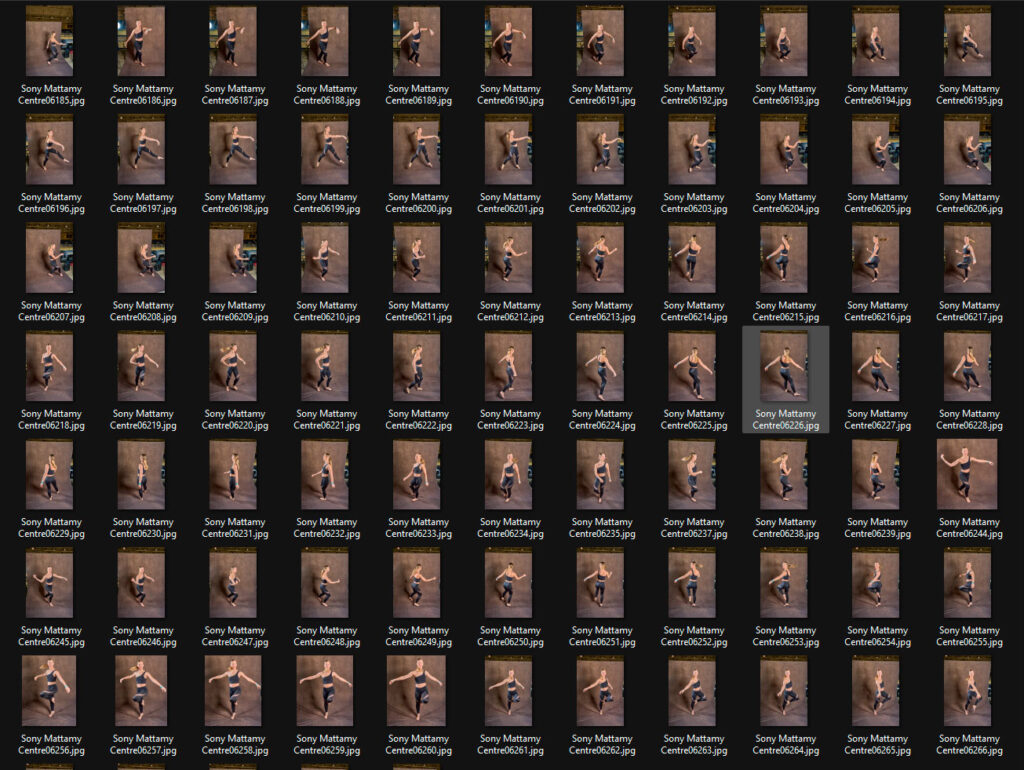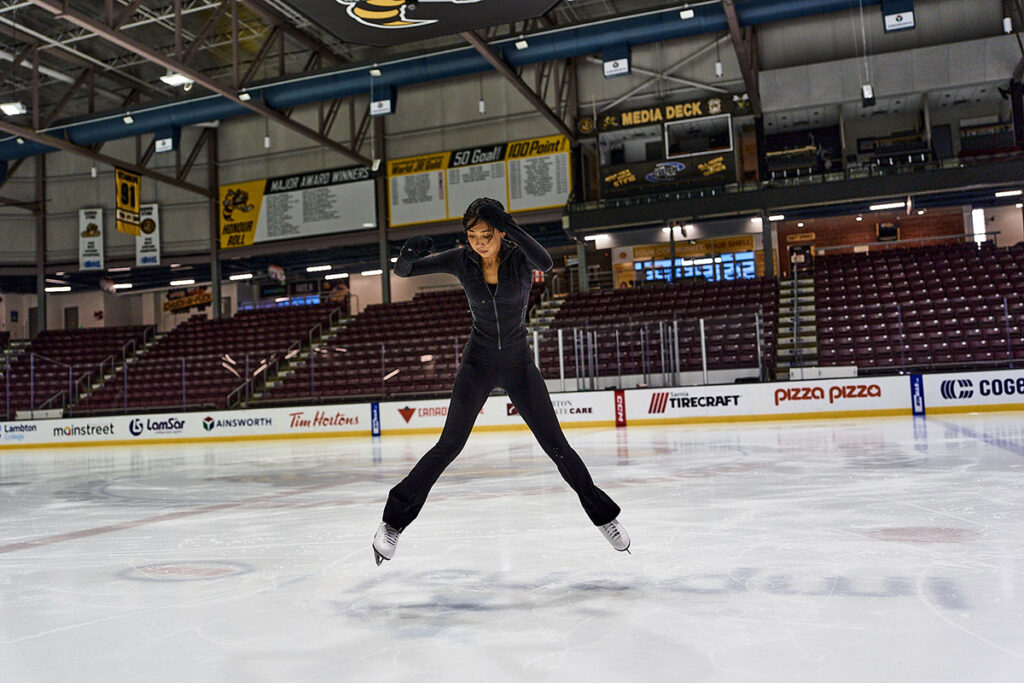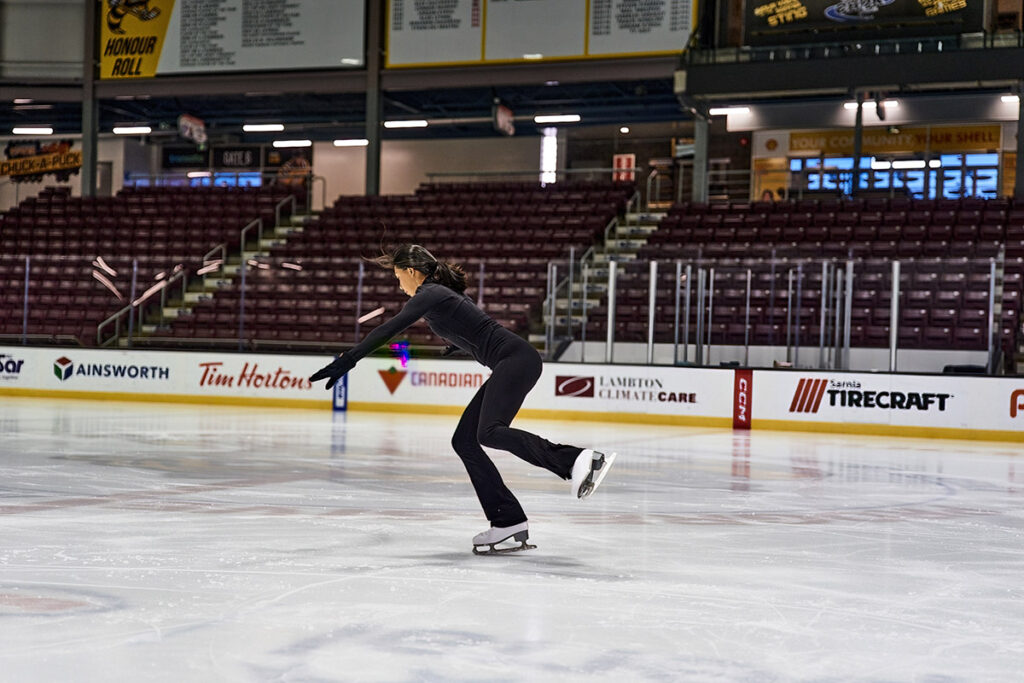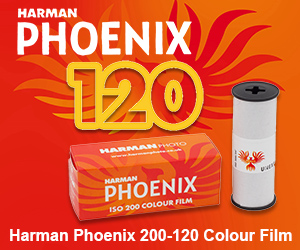Sony Canada recently hosted a series of events to showcase their latest cameras, and I had the privilege of participating with the cutting-edge broncolor Satos power pack and Pulso L lamps. As Sony pushes the boundaries of camera technology, their A9 III stands out as a marvel, featuring a Global Shutter, 120 fps capture with focus tracking and 1/500s native flash sync speeds. Pairing it with the broncolor Satos—a lighting system capable of firing flashes at up to 50 fps—was a natural fit to test the limits of both systems.
I had used the broncolor Scoro 3200 S with a Nikon D5 at 14 fps a few years ago. It was amazing to see Scoro keep pace at that speed. I was very curios to see how Satos would keep up at even faster shooting speeds.
At the first event, the Creator’s Showcase at the Mattamy Centre, I worked with a variety of models to push the Sony A9 III and Satos to their extremes.
My setup consisted of the following:
- broncolor Satos and 2x Pulso L lamps
- para 88 and P70 (with grids and gels for some images)
- Easiframe Curved Sweep background
- TetherTools Pro Tethering Kit on a Rock Solid Roller for my laptop
- TetherPro 31’ USB-C tether cable
- ThinkTank Photo Production Manager 50 to transport everything
Sony lent me both an A9 III and an A1 II, with the 24-70 f/2.8 G-Master II and 50 f/1.4 G-Master lenses. Sony gave me a run-through of the key features and asked me to challenge the gear – speed and auto focus.
With Sony’s A9 III set to Continuous High shooting mode at 50 fps, I captured high-speed sequences of models performing dynamic movements, including a former figure skater and a martial artist. The results were astonishing—Satos kept pace with the rapid-fire bursts, delivering perfectly exposed images with less than a 5% miss rate over nearly 1,800 frames. Even under demanding conditions like fast motion and intricate lighting setups, the combination of Sony’s precise autofocus and broncolor’s consistent light quality proved unparalleled.
Katya f/4-f/4.5, ISO 125, 1/500s. AF-C and human eye tracking so the camera would keep focus locked on her eye.
Former Latvian National figure skating champion Olga. Sony A9 III on Continuous High 50 fps. Aperture between f/2.8 and f/4, ISO 200, 1/500s.
Each jump would be 20-25 frames, which were all equally and properly exposed every single time. If I pushed the lights and camera to an additional 30+ frames, I would get one missed frame near the end of the sequence.
Those who know broncolor know that no other company controls and shapes light like broncolor. They are unmatched at the top of the lighting world. The para created this beautiful three-dimensional light around each model and the P70 helped capture fine details. Flash durations were quite fast for the power levels (264j at 1/1,300s para 88 and 66j at 1/2,600s P70). I noticed a slight blur in Olga’s hair at these settings, so I adjusted the flash timing to the fastest t.01 values: 264j at 1/3,300s para 88 and 66j at 1/7,100s P70. It’s important to note that when adjusting the flash curve, light consistency can have more variation. Instead of 100% every image, I noticed a subtle shift of less than 0.05% in power and colour output from Satos.
When you look at the cropped image below, you can see the individual hair strands are perfectly frozen – note the angle of the earring, too!!
Demevie, gymnast, figure skater and martial artist
Satos set to Optimal flash duration
The second event, a photography workshop at Lambton College, allowed for even more challenging scenarios, including studio and on-ice shoots. In the studio, the A9 III’s speed and accuracy shone as it tracked models moving across the scene, while Satos delivered flawless light bursts. On the ice rink, reflective surfaces and difficult lighting conditions tested the gear further. Using Satos’ battery-powered configuration, I shot 500 frames at high speeds, and the batteries remained impressively strong at over 90% capacity. Adjusting settings for High-Speed Sync (HSS), I found the system equally reliable, with minimal missed frames, even at 30 fps.
We started in the studio, shooting into the cove. I kept the para 88 but swapped the P70 for a 1×6’ stripbox. I had the 24-70 f/2 G-Master lens attached to the A9 III again. I set the camera at 50 fps High Speed shooting, at ISO125, 1/500s and f/2.
The combination of Sony’s revolutionary A9 III and broncolor’s unmatched lighting technology sets a new standard for capturing high-speed action. While expertise and intuition remain critical in photography, this pairing of advanced tools enhances efficiency and consistency, allowing creatives to achieve extraordinary results with fewer attempts. These technological breakthroughs don’t just keep pace with creative visions—they empower them.
Demevie 1/1,250s, ISO1000, f/2
Detail Crop: Demevie 1/1,250s, ISO800, f/2
Technology won’t replace skill and talent, but in the right hands, this high-speed tech will only allow to capture more great images and maximize everyone’s time on set.
Discussed Items
Author: Will Prentice
A portrait, fine art and commercial photographer for 30 plus years, Will Prentice is not just a contributor to PHOTONews magazine, but also host of PHOTONewsTV, owner of Captura Photography+Imaging and Technical Support/Brand Manager for Amplis Foto, Canada’s largest distributor of photographic equipment.
Will teaches photographers of all skill levels how to improve their craft – from creative photo projects to picking the right gear for their needs to flattering lighting to getting the best expressions to creating final images for screen and print. His unique style of highly detailed images with perfect tonality, wide dynamic range and stunning colour is instantly recognizable. Commercial clients rely on Will’s creative eye and mastery of lighting.
When he’s not behind the camera or in front of a class, you’ll find Will outdoors in any weather – usually on one of his bikes or enjoying time with his grandchildren.






















